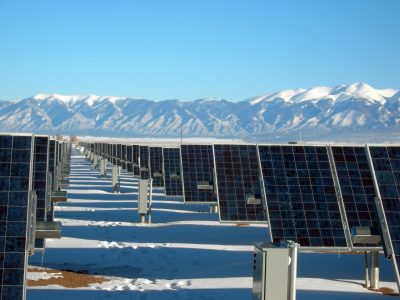The world is waking up to the fact that we need to secure the future of renewable energy. Global energy needs are always growing but we cannot afford to rely on the fossil fuels that have got us this far. Not only do we have a dwindling supply; their use is poisoning the air we breathe and the earth we live off.
Renewable energy is the future for the world’s energy production, but the no one can say with certainty how their use will change as the years go by. The ever-present economic drivers of cost, supply and demand will have their say, as will the progress of our ability to design and manufacture ever more efficient renewable technologies.
Where will we get our energy from in the future?
Solar energy and wind energy are the world’s biggest sources of renewable energy and grow in popularity each year. The North Sea is the site of enormous ongoing offshore wind farm developments that will have a big impact on Europe’s energy supply, while the usage of solar power continues to grow in both domestic and commercial settings. We at EvoEnergy have no reason to suspect that wind and solar power will lose importance in the coming years, especially as the cost per kWh of the energy they produce continues to fall.
Other notable sources of energy for the future are new waves of nuclear power and geothermal energy. Nuclear power has its well-documented problems, but as technology develops it is possible that it will become a viable replacement for centralised fossil fuel power stations.
Geothermal energy is another renewable option, but is limited by geography. It is unlikely to match wind and solar power in future prominence, though it will continue to be an important source of energy for suitable locations.
Trends in the energy industry
The energy industry as a whole is shifting to respond to the changing landscape of energy production. Although the largest businesses in the sector are notoriously slow to innovate and adapt, meaningful changes are happening. The cost of fossil fuels is rising as the cost of renewables falls, which means that looking to renewable energy sources is simply good business sense.
Giants of the liquid fuel industry like BP and Shell are already making sizeable investments in renewable energy companies as they look to safeguard their status in a future that will be free from their primary product. Meanwhile, UK energy providers both large and small are starting to acquire energy from renewable sources. Some are even beginning to offer green energy tariffs to their customers, recognising that British energy consumers are increasingly conscious of their carbon footprint.
More options are becoming available for businesses that are interested in local renewable energy production. Businesses who make use of EvoEnergy’s solar panels, for example, can benefit from our power purchase agreement or our Fronius lease scheme, both of which represent reduced-cost options for renewable energy production and can even help businesses to make money on their solar energy.
Various options with benefits like these are becoming available for both businesses and homeowners as energy companies recognise the benefit of being able to source energy locally to meet high demand. We expect this trend to continue into the future as the demand for renewable energy continues to rise.
The decentralisation of energy supply
The future of energy may lie outside of the traditional centralised power station model. Because solar and wind energy can be generated almost anywhere, from small installations to huge farms, our reliance on centralised power stations is likely to diminish. In a future free from fossil fuels, nuclear energy is the only current power source that would need to be centralised.
Thinkers in this area have discussed the feasibility of managing supply digitally to be able to meet changing demand. After all, demand fluctuates all year round. When it spikes, the ability to draw power from local energy sources could be vital. Businesses with solar panels or even wind turbines on their premises will be well-placed to benefit from decentralised energy supply.
In addition, technology that allows buildings to regulate their energy usage is improving, with implications for everything from individual homes to large business campuses. Google is one large corporation that made use of AI to regulate energy in their data centres, leading to significant reductions in waste. There is no reason why similar solutions will not become more widespread in the future through advances in smart technology. Such advances will undoubtedly prove beneficial to organisations that have invested in their own renewable energy sources, as they will be able to use the power they have produced more efficiently.
Stabilising the future of renewables with battery storage
Another key to efficient use of power is storage. Weather-reliant renewable energy generators like solar panels and wind-turbines naturally go through periods of high production and slower periods. Cost-effective energy storage is the key to ensuring that excess energy generated in peak periods can be used to shore up the gaps when generation is lower.
Battery storage technology is advancing. As the years go by it becomes cheaper and better at storing energy for long periods of time. Progress in this field means that batteries will undoubtedly continue to improve in the years to come, but the options available now are already invaluable additions to solar installations.
Looking ahead
10 years from now, this discussion on the future of renewable energy will look very different. The rate of innovation and change in this field has been remarkable, driven by individuals and businesses that are committed to making the world a cleaner place to live.
Solar and wind technology is here to stay. As their prices fall and production increases, we expect to see more and more of the energy used daily around the world coming from these sources. Their suitability for local production is also changing the business of energy supply, prompting changes that are yet to settle down into a new normal.
